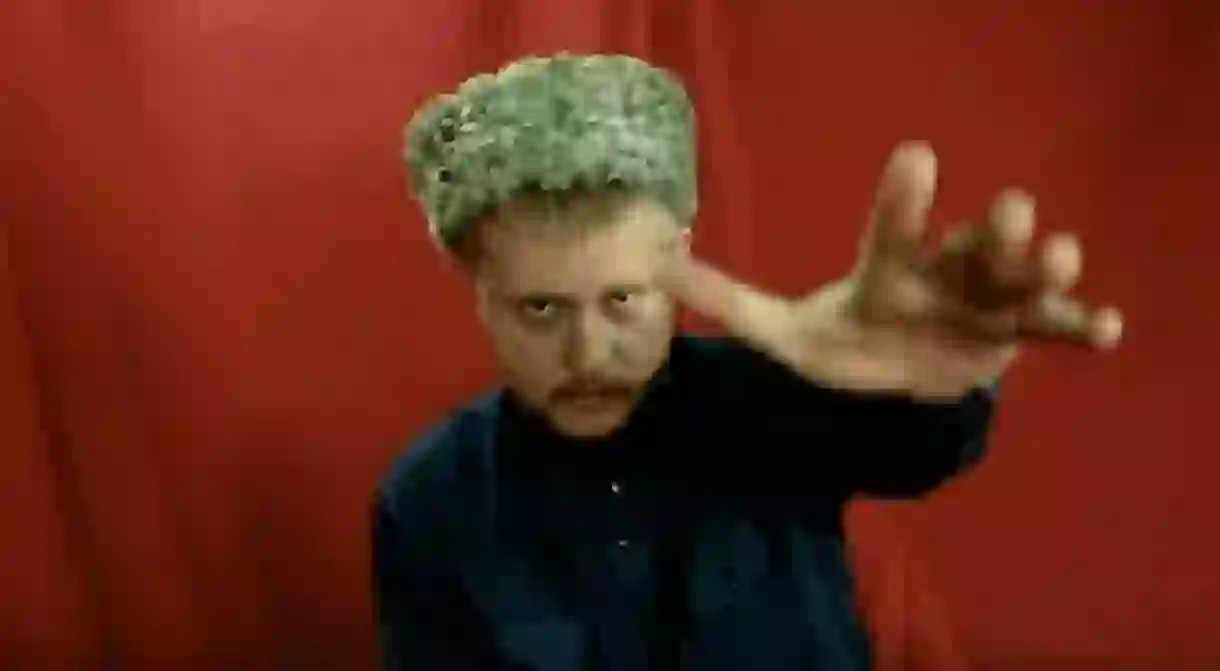Meet Maxim Ilinov, The Rapping Cossack from Rostov-on-Don

The pages of history books are filled with stories of Cossack heroics and of their skill as some of the finest warriors in Russia, yet modern day Cossacks are somewhat of an unknown entity. As one of Russia’s ancient people, with a culture that is deeply rooted in spiritual faith and serving their nation, what do modern day cossacks do? Well, some rap, of course.
Challenging the old image, Maxim Ilinov is an artist, rapper and Cossack that puts a very contemporary spin on his very traditional culture. Ilinov says he is a proud Cossack man and wants to share his traditions and culture with the world. And while he also admits expressing his culture through hip hop may be a little funny and unconventional, it’s probably not going to stop him.

From his home town of Rostov-on-Don, he writes raps with his band Ataman’s Palace(Atamansky Dvorets). His calling to express himself through his music is so strong that it interrupts his other passion: painting. He says his paintings are about his relationship with the world and sometimes when he’s painting he gets so inspired that he has to drop his paintbrush to write down a song.
Unsurprisingly, his painting are filled with religious iconography, as the Cossacks are a deeply religious people known for their warrior prowess. As Orthodox Christians, Cossacks trace their roots back to horsemen who roamed southern Russia in the 14th century. The word ‘cossack’ is derived from ‘Kazak’, a term that means adventurer or freeman.

Fleeing from serfdom (forced labour on aristocratic farms) in Eastern European countries in the 15th century, these people that would go on to become known as Cossacks, resettled in southern Russia across six different areas and began to govern themselves. They settled mainly along the lengthy Don River, with Rostov-on-Don continuing to be an important cultural heartland today, as well as in the Caucuses and near the Volga and Ural rivers.
Their fierce reputation earned them a relationship with the Russian government, where they would receive privileges in exchange for military service. In the 17th and 18th centuries, Cossacks helped the Russian Empire seize control over a sizeable chunk of what is now Ukraine and helped conquer Siberia and areas in the Caucus Mountains. Eventually their self-governance was phased out and their military service was made official under the Russian Empire, and they have continued to serve national and local governments as hired forces against societal reprobates.

Cossacks learn to be warriors almost at birth: custom has it parents place a weapon in the hands of a male infant, and put them on the back of a horse as soon as they can. Males would stage battles with horses and swords, a tradition that continues on today.
An annual event is held in celebration of the Cossack heritage of courage, weaponry prowess and bravery. Shermicii held in the Rostov region is a competition that marks the rite of passage where boys become warriors. It includes wrestling, fighting fencing, archery, horse riding, fencing on horseback and horseback archery.

Events like Shermicii balance out the image of the modern day Cossack, which is marred with strident nationalism and outbursts or violence. Still, there are members of their community, like Ilinov, who help paint a bigger picture of these ancient people:
‘We have something to say and we don’t do it for money or fame, we do it so that others get to our people, our traditions, and our way of life, we were able to do that through the prism of hip hop’.













